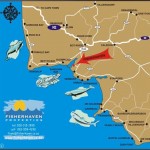Kleinmond Vlei Horses and Horses of the Anglo Boer War
- Jul
- 08
Before the war started and well into the siege phases, the British commanders and most of their horse experts, though not all, looked down upon the locally bred Boer horses and Basuto Ponies as too small and entirely unsuitable for the needs of the cavalry and artillery. However, as the war went into the guerilla phases and dragged on for almost three long years, more and more responsible British officers came to appreciate and, indeed, covet the local product. Major A.H. Lane in his Horses for War Purposes said: This was the fatal mistake we made in South Africa in 1899. Thousands of hard little horses could have been procured locally. But these were allowed to be taken by the enemy and we imported a comparatively useless animal at about double the cost. Had the War Office listened to proper advice in 1898-99, our columns during the first part of the war could have been well mounted on local horses. But the enemy got these and we tried to get near them with men mounted on soft, unseasoned animals.
The burghers on their horses made some incredibly long rides over the length and breadth of the country, harrying the enemy and refusing to surrender to numerically far superior forces. The epic ride of General Smuts’ commando from their crossing of the Orange River near Zastron to Springbok in the North Western Cape, is a classic example. This was a journey of at least 2000 kilometres frought with danger and hardship for men and horses. On numerous occasions General Christian de Wet and his commando miraculously escaped the British clutches on horseback. One of these escapes over the Magaliesberg between Pretoria and Rustenburg sounds unbelievable if one crosses over that same route on foot today. It could only have been done on the most surefooted and most trustworthy of horses. This is exactly what the Boer horses and Basuto ponies were and their descendants still are.
Copyright: F J van der Merwe
P O Box 664, Kleinmond 7195
Recent Posts
- The Pros And Cons Of Solar Power
- 3 Things Private Sellers Wish they Knew (That Estate Agents Do!)
- Top 5 Tips For Sellers in a Buyers’ Market
- Top 5 Tips For Buyers In A Buyers’ Market
- Your Property Title Deed – A Short History
Contact Us
Fisherhaven Properties
Frans Theunissen
Tel: 082 559 4290
Tel: 028 315 1990
Fax: 086 660 4823
info@fisherhaven.co.za

Please ask us about long-term property rentals in the area.


